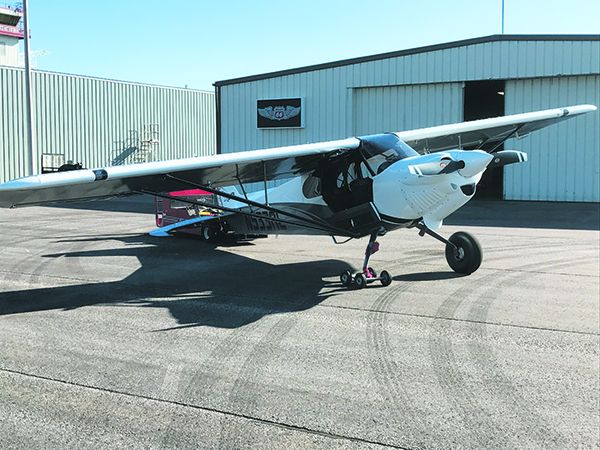The ongoing allure of tailwheel airplanes for pilots seeking backcountry adventure, flying aerobatics or simply owning one because it has a tailwheel means that we’re always getting questions from prospective owners about whether they can insure their purchase.
Our definitive answer is: probably. But it might be expensive. And your age is going to be a factor.
The bottom line is that after nearly 30 years of an incredibly soft insurance market where almost any owner could get insurance for almost any aircraft for shockingly low premiums and insurance companies were looking at a lot of red ink, the pendulum has swung to the other extreme, the market has hardened and things are tough and expensive for aircraft owners.
For prospective tailwheel owners and current owners who are 70 or older, the hard market means doing some homework before applying for insurance or renewing an existing policy.
We had a long conversation with Mike Pratt, an aviation insurance broker with Foundation Risk Partners (www.foundationrp.com), a large brokerage with offices in 14 states. He’s been in the business for 20 years, is also a professional pilot, has been flying tailwheel airplanes since he was a teenager and currently owns a Republic Seabee.
Pratt started the conversation by saying that stupid wrecks and claims and lack of pilot training are what is driving the insurance market for tailwheel airplanes above and beyond the hard market. There are only about a dozen insurance companies that write aviation insurance and not all will insure tailwheel airplanes. It’s up to the owner to put her or his best foot forward when seeking insurance.
With that as background, let’s also look at what scares aviation insurance companies. In the tailwheel world it’s little airplanes with very high hull values. Thinking of high hull values, our thank you to Mike Hart for the photo of the damaged XCub, above.
That means that if you haven’t yet obtained a tailwheel endorsement, don’t buy a brand-new Husky, Scout, Maule or XCub and expect to get insurance with one simple phone call. If you can get it at all, it’s going to cost at least $15,000 for the first year.
Here is what Pratt told us will help you insure a tailwheel airplane:
• Get your tailwheel endorsement before you buy an airplane and apply for insurance.
• Get time in the type of airplane you intend to buy—even if it’s only five hours—before you apply for insurance. Putting down a zero in the time in type box in the insurance application means that some of the insurance companies will not even look at you.
• Be willing to take as much dual as the insurer requires in your new airplane before you fly it solo. So what if it costs you $2000? You may have dropped over $200,000 for the airplane. Pratt told us he sees pilots become tightwads over training way too often—it’s one of the most stupid things they can do. Insurance companies have had their financial faces rubbed in the value of training for years. They know it keeps claims down.
• Never, ever, ever claim flight time or experience that you don’t have when you make an insurance application. If you do have an accident, that’s not only absolute grounds for the insurer to deny coverage, you may be liable for committing insurance fraud.
• If you are 70 or older and have been able to get insurance for your tailwheel airplane, don’t rock the boat. Do not change insurers. Don’t get huffy in response to a big premium increase—the odds are that no one else will insure you and the insurance company that has been loyal to you may drop you. Pratt said that insurers are dropping pilot owners right and left.
• If you have a claim, there’s a good chance that your insurer will drop you, so do everything you can to avoid having an accident. Recognize that you are like all pilots—not very good at evaluating yourself. Therefore, take recurrent training with a tailwheel CFI every six months and specifically ask the CFI to look for evidence that you’ve lost a step or that your skills have slipped. The big risk is RLOC (runway loss of control). Practice a lot of landings, of all kinds, with a CFI every six months. We’re not kidding.
• If you seek to insure an airplane of a type in which it’s tough to find CFIs with type experience, work with your broker to see if the training can be with a “guru” in, for example, Cessna 195s, who has a great deal of experience but is not a CFI. We’ve seen it work out well.
• Recognize that at some age, if you want insurance, you’ll have to switch to a nosewheel airplane.
• If you cannot get hull insurance, you may want to buy liability-only insurance (you should be able to get it) and understand that you’re on your own for the value of the airplane itself in an accident.
Our bottom line is that before you buy a tailwheel airplane, talk with your insurance broker and come up with a plan to insure it—you don’t want any surprises.


